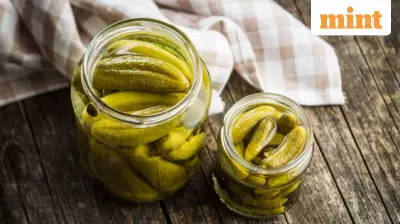
The simple instruction "salt to taste" found in countless recipes hides a complex world of culinary science and sensory perception that separates amateur cooks from professional chefs. This seemingly straightforward direction actually represents one of the most challenging aspects of cooking to master, requiring understanding of both chemical processes and personal preference.
The Science Behind Salt's Transformative Power
Salt does far more than just make food salty—it performs multiple crucial functions in cooking that professional chefs understand intimately. Sodium chloride acts as a flavor enhancer, amplifying the natural tastes of ingredients while suppressing bitterness. The chemical structure of salt allows it to open up taste buds, making them more receptive to other flavors in the dish.
When salt encounters food, it begins a process of osmosis where it draws out moisture and breaks down cellular structures. This is particularly important in meat preparation, where salt helps proteins retain moisture during cooking. In vegetable dishes, salt can break down tough fibers, making them more tender and palatable. The timing of when salt is added can dramatically affect the final texture and flavor profile of a dish.
Mastering the Technique of Proper Salting
Professional chefs approach salting as a multi-stage process rather than a single action. They often employ what's known as "seasoning in layers," adding salt at different stages of cooking to build depth of flavor. This technique ensures that every component of the dish is properly seasoned rather than having salt only on the surface.
The most critical mistake home cooks make is waiting until the end to season. When salt is added only at the finish, it sits on top of the food rather than integrating with the ingredients. This results in an uneven seasoning where some bites are overly salty while others taste bland. Instead, chefs recommend seasoning throughout the cooking process, tasting and adjusting as you go.
Different types of salt also behave differently in cooking. Fine table salt dissolves quickly but can become overly concentrated, while coarse kosher salt or sea salt provides more control and gradual seasoning. Many professional kitchens standardize their salt type to ensure consistent results across all dishes.
Cultural Considerations in Indian Cuisine
In the context of Indian cooking, the concept of "salt to taste" takes on additional dimensions due to the complexity of spices and regional variations. Indian dishes often contain multiple layers of spices where salt plays a crucial role in balancing heat, acidity, and sweetness. The diverse regional cuisines across India have developed their own approaches to seasoning based on local ingredients and traditions.
Traditional Indian cooking techniques frequently involve blooming spices in oil or ghee, and the timing of salt addition can affect how these spices release their flavors. In dishes like dal or curries, salt added early helps break down legumes and vegetables, while in dry vegetable preparations, salt might be added later to prevent moisture loss.
The growing health consciousness has also influenced how Indian cooks approach salt, with many seeking to reduce sodium without compromising flavor. Techniques such as using acidic ingredients like lemon juice or yogurt, incorporating umami-rich ingredients like tomatoes and mushrooms, and toasting spices more thoroughly can help create the perception of saltiness with less actual salt.
Mastering "salt to taste" ultimately comes down to practice and developing one's palate. Professional chefs recommend starting with less salt than you think you need, tasting frequently, and making small adjustments. Keeping a cooking journal to note how much salt works best in different types of dishes can help build intuition over time. The goal is to reach the point where seasoning becomes instinctive rather than measured, allowing the natural flavors of quality ingredients to shine through with just the right amount of enhancement.





